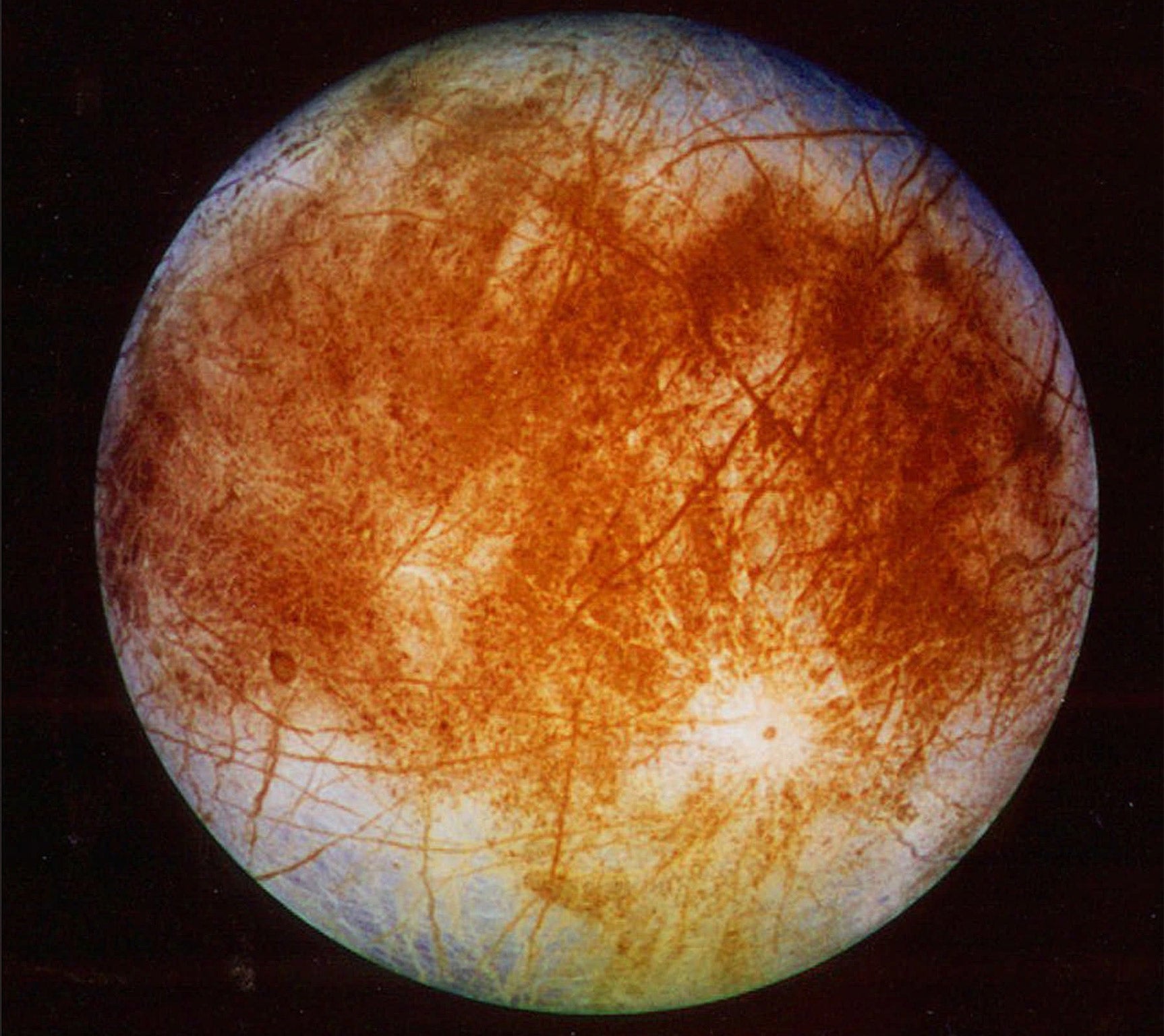Search for life on Europa: Nasa chooses tools that will look for living things on Jupiter’s moon
Scientists hope that the mysterious watery world could provide the conditions for living organisms

Nasa has picked out the toolbox that it will load up onto a probe and send to one of Jupiter’s moons in search of life.
The agency hopes that the probe will be able to scour Europa to check whether the thick layer of ice on its surface obscures an ocean, which they hope could contain conditions for living things.
It has chosen nine instruments from a shortlist of 33. It includes different kinds of cameras and other sensors that will be able to send back images of the moon’s surface and analyse what it’s made up of.
The probe will also carry a special radar that can penetrate the moon’s icy shell. Scientists haven’t been able to investigate underneath that layer, and hope that by looking at the depth and content of the ocean that could be beneath they can learn more about whether life is hiding in our solar system.
Nasa will also attach a magnetometer to analyse the magnetic field and understand more about what the ocean’s made up of, and a special thermal instrument that can look for whether there are warmer parts of the water.
Nasa's Hubble Space Telescope observed water vapour above the south polar region of Europa in 2012, providing the first evidence of watery eruptions from beneath the ice.
Dr Curt Niebur, Europa programme scientist at Nasa headquarters in Washington DC, said: "This is a giant step in our search for oases that could support life in our celestial backyard. We're confident that this versatile set of science instruments will produce exciting discoveries on a much-anticipated mission."
He added: "The big question this mission needs to answer is: is Europa habitable? The instruments could find indications of life, but they are not life detectors."
Nasa's 2016 budget request includes 30 million US dollars (£19.55 million) to formulate a mission to Europa which will send a solar-powered spacecraft to perform repeated close fly-bys of the moon over a three-year period.
In total the probe will perform 45 fly-bys at altitudes ranging from 16 to 1,700 miles.
Nasa's Galileo spacecraft, which explored Jupiter and its moons for eight years from 1995, revealed strong evidence of a subterranean ocean on Europa.
Scientists now think the ocean could contain more than twice as much water as exists on Earth, despite Europa only being about the size of Earth's moon.
Powerful tidal forces caused by the tug of Jupiter's gravity are believed to keep the ocean warm and unfrozen.
Dr John Grunsfeld, associate administrator for Nasa's Science Mission Directorate in Washington DC, said: "Europa has tantalised us with its enigmatic icy surface and evidence of a vast ocean, following the amazing data from 11 fly-bys of the Galileo spacecraft over a decade ago and recent Hubble observations suggesting plumes of water shooting out from the moon.
"We're excited about the potential of this new mission and these instruments to unravel the mysteries of Europa in our quest to find evidence of life beyond Earth."
Additional reporting by Press Association
Subscribe to Independent Premium to bookmark this article
Want to bookmark your favourite articles and stories to read or reference later? Start your Independent Premium subscription today.

Join our commenting forum
Join thought-provoking conversations, follow other Independent readers and see their replies